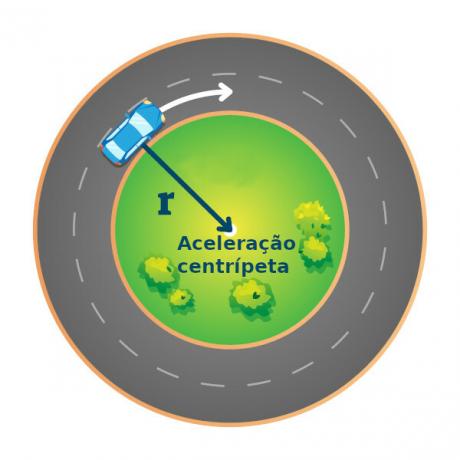THE lawinCoulomb is an important law of physics that states that the electrostatic force between two electrical charges is proportional to the module of the electrical charges and inversely proportional to the square of the distance that the separates.
Coulomb's law and electrical force
Charles Augustin in Coulomb (1736-1806) was a French physicist responsible for determining the law describing the force of interaction between electrical charges. For this purpose, Charles Coulomb used a torsion balance, similar to the scale that was used by Henry Cavendish to determine the constant of universal gravitation.
Do not stop now... There's more after the advertising ;)
O experimental apparatus used by Coulomb consisted of a metallic rod capable of rotating, which, when charged, was repelled by a small metallic sphere charged with electrical charges of the same sign. The figure below shows a schematic of the torsion balance used by the physicist:

The torsion balance was used by Coulomb to determine the law of interaction between electrical charges.
Coulomb's law formula
According to his law, the force between two electrically charged particles is directly proportional to the magnitude of their charges and is inversely proportional to the square of the distance between them. Below, we present the mathematical formula described by Coulomb's law:

F — electrostatic force (N)
k0 — dielectric vacuum constant (N.m²/C²)
Q — electric charge (C)
what — test electrical charge (C)
d — distance between charges (m)
In the formula above, k0 is a proportionality constant called the electrostatic vacuum constant, its modulus is approximately 9,0.109 N.m²/C².Also, we know that loads of signalequalrepel while loads of signalsopposites attract, as shown in the figure below:

Charges of equal sign repel, and charges of opposite signs attract.
See too: What is electricity?
It is worth noting that, even if the loads have different modules, the force of attraction between them is equal, since, according to the Newton's 3rd Law — the law of action and reaction — the force that the charges make against each other is equal in module. These are found in the samedirection, however, in senses opposites.

The hair of the woman in the figure is loaded with charge of the same sign and therefore repels each other.
An important property of electrical force is that it is a Vector greatness, that is, it can be written using vectors. The vectors are oriented straights that present module, direction and sense. Therefore, in cases where two or more electric force vectors are not parallel or opposite, it is necessary that the rules of vector sum, in order to calculate the net electrical force on a body or particle.
See too: What is an electric field?
Coulomb's Law Graph
Coulomb's law states that the electrical force between two charged particles is inversely proportional to the square of the distance between them. Thus, if two electrical charges are at a distance d, and come to meet at half that distance (d/2),the electrical force between them must be increased by four times (4F):

If we reduce the distance between two charges by half, the electrical force between them increases by four times.
Check out a table showing the relationship of electrical force between two loads of modulus q, when separated by different distances:
electrical power module |
Distance between charges |
F/25 |
d/5 |
F/16 |
d/4 |
F/9 |
d/3 |
F/4 |
d/2 |
F |
d |
4F |
2d |
9F |
3d |
16F |
4d |
25F |
5d |
Putting Coulomb's law in the form of a graph of force versus distance, we have the following form:

Examples of Coulomb's Law
1) Two electrically charged particles, with charges of 1.0 μC and 2.0 mC, are separated in vacuum at a distance of 0.5 m. Determine the magnitude of the electrical force existing between the charges.
Resolution:
Let's use Coulomb's law to calculate the magnitude of the electrical force that acts on charges:

2) Two point particles charged with identical electrical charges and of modulus q are separated at a distance d. Then, double (2q) the modulus of one of the loads, triple the modulus of the other (3q) and change the distance between the loads to one third of the initial distance between them (d/3). Determine the ratio between the initial and final electrical forces existing between the charges.

Solved exercises on Coulomb's law
1) Two charged particles with identical electric charges q, supported by inextensible wires and negligible mass, are in a balance of forces, as in the figure shown below:

If m = 0.005 kg is the mass of each of the particles, determine:
Data:
g = 10 m/s²
k0 = 9.109 N.m²/C²
a) the module of the electrical repulsion force that acts on the loads;
b) the modulus of the electrical charges of the particles.
Resolution:
a) In order to calculate the modulus of the electrical force between the particles, it is necessary to notice the following similarity between angles, observe the figure:

We can say that the tangent of the angle θ of the two triangles (whose sides are formed by the distances 4 and 3 and F and P) is equal, and so we do the following calculation:

b) Having calculated the modulus of the electrical force between the charges, it is possible to determine its modulus, since the charges are identical:

By Me. Rafael Helerbrock


